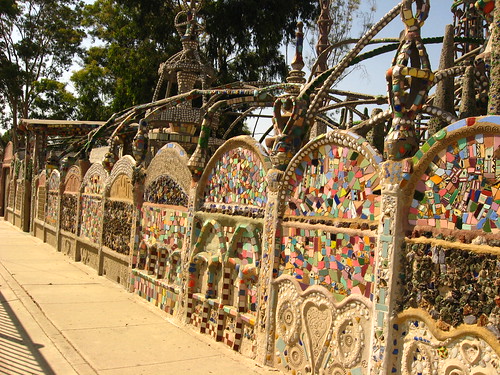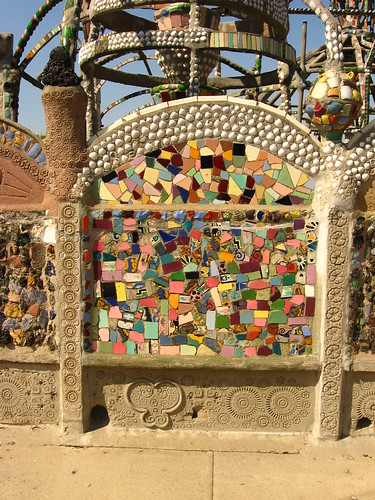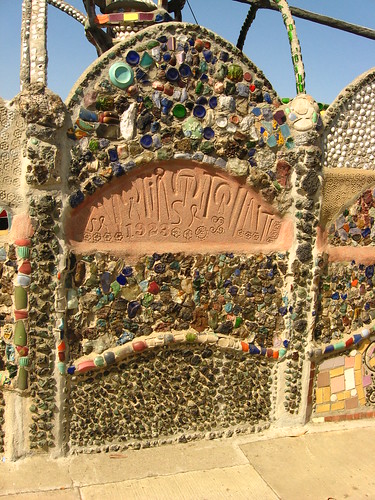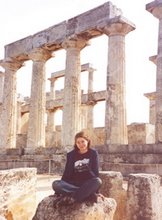
The Watts Towers are one of LA's more unique attractions. Built by Italian immigrant Simon Rodia over a period of 30 years, the nine towers and associated structures are a great example of 20th century American folk art. Rodia immigrated to the US at the turn of the last century, working his way across the country and eventually settling in 1921 in Watts, California. The same year, he began building the Towers, working completely by hand, without scaffolding, and using whatever materials he could get his hands on. The project was finished in 1955, when he simply left one day, deeding the property to a neighbor. The City of Los Angeles declared the Towers unsafe and ordered them demolished. However, public outcry prevented the demolition, and the property is now listed on the National Register of Historic Places and is a National Historic Landmark and Los Angeles Historic-Cultural Monument number 15. The property is also now a state historic park, and the towers have been undergoing renovation following the Northridge quake.


Another interesting aspect of the Watts Towers is that despite the prominent role of American material culture in the decorative element, the design of the Towers in fact echoes aspects of traditional Italian culture. Whether by design or unconscious imitation, the Towers strongly resemble the tall, elaborately decorated ceremonial towers carried in the processions of the Giglio festival in Nola, Italy, near where Rodia spent his childhood.
Tower from a Giglio festival in New York, 1962
While the neighborhood in which the Towers are situated is, to say the least, sketchy, they are certainly worth a visit. Pictures do not do the site justice- only in person can you get a sense of the scale of this unique work, and truly appreciate the 30 years of work put into it by one man. The site is very easy to get to by LA standards, just off the 110 freeway, so no excuses.

Here is the National Register registration form [pdf] (and the source of data for this post): Arloa Paquin Goldstone, "The Towers of Simon Rodia", National Park Service. June 18, 1990.
Also, check out this interesting 1957 film showing the man himself at work:
http://www.youtube.com/watch?v=CcpJFawYZlY










